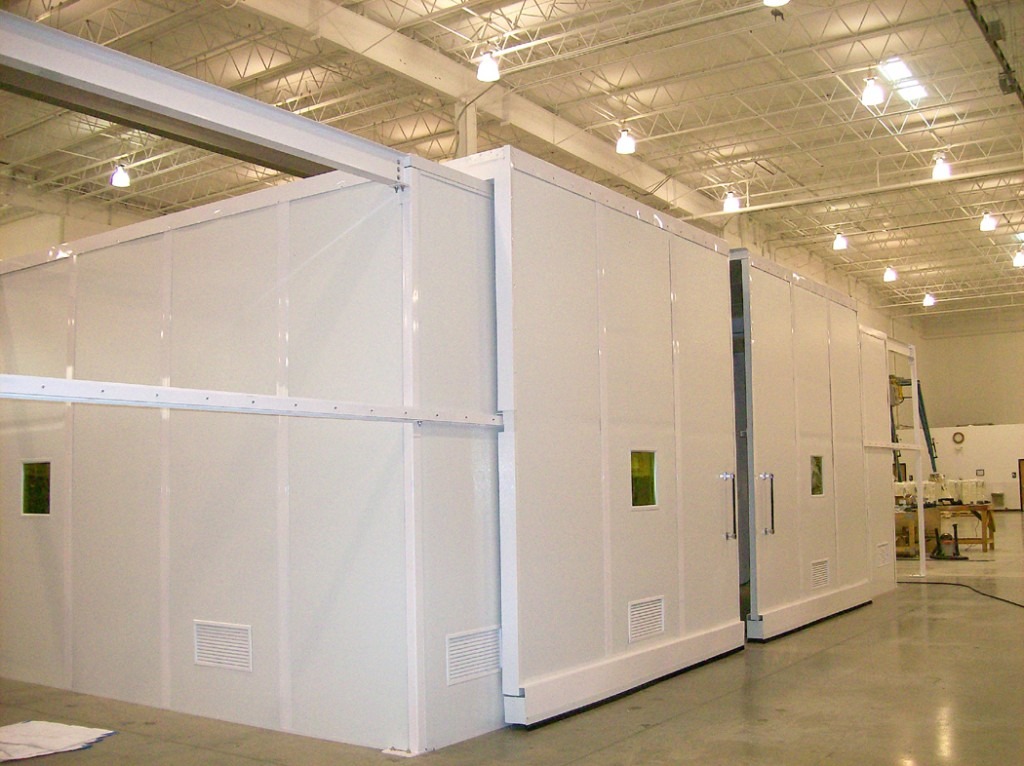Modular Cleanrooms And Removing Contaminants.
Blog
Clean rooms are more of a modern day assessment that creates a space inside or a part of a house that ultimately makes something seem a bit cleaner. Often built with advanced technologies in incorporating air flow and air filtered systems, they increase the cleanliness while maintaining the conditions for some sensitive materials. These types of modular cleanrooms are often designed by companies that sell prefabricated non-metallic cleanrooms. There is a range of clean rooms with different specifications for their standard.
ISO 6 cleanroom and ISO 7 cleanroom are both two standards that are officially deemed a cleanroom.
The Different Types of Wall Systems for Modular Cleanrooms
Wall systems for modular cleanrooms often have a few unique ways that they can be constructed.
- Hard wall room enclosures
- Soft Wall clean rooms
Hardwall Room enclosures are constructed and fabricated modular walls that have been built to a specification with sound proof and sealed conditions in order to maintain and contain specific types of bacterias and particles in order to keep the area from being a contaminated zone. This will often be applied in scientific excavations that depend on the enclosures in order to keep some level of security when it comes to airborne contaminants.
Softwall room enclosure are often built for patient and hospital preferences. While the purpose does change depending on a few factors and the job itself,
prefabricated non-metallic cleanrooms offer a constraint and a typical secure enclosure to offer the patient or virus some type of security.
The Potential For Contamination
A contamination is the introduction of a something that was not intended to be included. If there are contaminants in the area that will cause an alchemical change in the device, product, or chemical makeup of the experiment, then there is a change to the chemical itself and the process is foiled and must be re-done. Modular cleanrooms are designed to prevent contamination from building a controlled or seemingly controlled environment that would isolate the experiment and provide an increased opportunity to have the desired result.

Preventing contamination through Modular Cleanrooms
There are a few different technologies that are incorporated to cleanrooms in order to maintain the level of standard that each room is deemed to have. In each case, these are the simple systems, that vary with the company in order to maintain the room at a typical standard. These standards can be altered and changed, but these technologies are applied in even some of the highest grades of experiments.
- Filtration
- Cleaning
- HEPA ( High efficiency Particulate air Filter )
- Clean room Architecture
Each of these factors are applied to produce the desired results. HEPA filters have been applied in many different ways for a ton of different projects are are included in the systems that would build a clean room, whether its a class 1000 cleanroom or a class 10000 cleanroom.
The Different Classes Of Modular Cleanrooms
There are a few different qualifications for Modular Cleanrooms and they are specified in terms of classes. Typical buildings that are constructed to be an environment that people breath will have on average about 500,000 to 1,000,000 particles that can be observed and are known to exist. This measurement is
per cubic foot of air. The difference with Class 1000 cleanroom and a class 10,000 clean room is that they are actually the limitations of particles for each standard. This means that a class 1000 will limit particles to 1000 per cubic foot and the class 10,000 will limit the particles to 10,000 per cubic foot. This creates the effect and the design of a cleanroom that is ultimately set up and built by scientists with a combination of technology to create the desired environment.
These modular rooms will also classified in the categorization of and ISO 6 cleanroom and an ISO 7 cleanroom. These standards are just another way of saying that they are either a class 1000 or a class 10000. The difference is only in the way it is understood based on a company the owns specific rights to the description. The class 1000 cleanroom is the ISO 6 cleanroom and the class 10000 cleanroom is the ISO 7 cleanroom.
While there are many different cleanrooms and particles can be formed at a moments notice, the effect is more of the mind of the people who are involved in the experiments that demand that standard of room. With the many choices available for every modular cleanroom there are tons of companies that sell prefabricated non-metallic cleanrooms that are available online.
The Highly Recommended Panel Built modular cleanroom mezzanine
This modular cleanroom is one of the best available modular
cleanroom mezzanine that is available today. Made for heavy duty experiments with pre-fabricated staircases and enclosures that are set to a specific standard, they have metal railings, towers, coated with a lasting finish and could be adapted to fit offices and different things that will be engineered with plans working with the buyers. This highly specific and tailored device will offer the flexibility and the mobility to move around and create an environment that can be around or leading to some of the leading experiments in your business.
These modular cleanrooms that have been provided for science experiments and classified information will often be utilized for many of the ongoing information of the time. While there are different reasons they prosper the contaminants are often removed from any experiment making modular cleanrooms a leading option for the highest levels of information.
